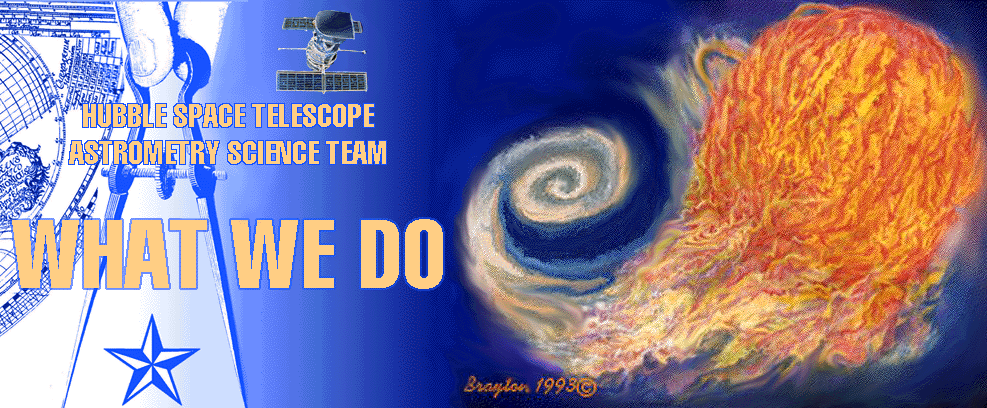
We present an absolute parallax and relative proper motion for the fundamental distance scale calibrator, RR Lyr. We find an absolute parallax pi(abs) = 3.82 ± 0.2 mas. Spectral classifications and VRIJHKT2M and DDO51 photometry of the astrometric reference frame surrounding RR Lyr indicate that field extinction is low along this line of sight. We estimate <A(V)>=0.07 ± 0.03 for these reference stars. The extinction suffered by RR Lyr becomes one of the dominant contributors to the uncertainty in its absolute magnitude. Adopting the average field absorption, <A(V)>=0.07 ± 0.03, we obtain an absolute magnitude MV(RR) = 0.61 ± 0.11. This provides a distance modulus for the LMC, m-M=18.38 - 18.53 ± 0.11 with the average extinction-corrected magnitude of RR Lyr variables in the LMC, <V(RR)>, remaining a significant uncertainty. We compare this result to more than 80 other determinations of the distance modulus of the LMC.
Here are the Large Magellanic Cloud distance
modulus comparison table, plot, and the RR Lyrae
technical report.
Barbara McArthur has updated the table, references and plot to June 2002.
For larger views of the plots: distance, by
method, by
object look here.
![]()
TV Columbae (TV Col) is a 13th magnitude Intermediate Polar (IP) Cataclysmic Variable (CV), with multiple periods found in the light curves. Past estimates predicted a distance of 400 parsec to greater than 500 parsec. Recently completed Hubble Space Telescope (HST) Fine Guidance Sensor (FGS) interferometric observations allow us to determine the first trigonometric parallax to TV Col. This determination puts the distance of TV Col at 368 ±16 parsecs. Distance is particularly useful, if one is either interested in comparing with other systems or interested in the absolute energetics involved in this phenomenon.
The technical report is available through this link.
We searched for PLANETS near Proxima Centauri and Barnard's Star by attempting to detect wiggles in their motion. Why would a star wiggle? It and any associated planet would orbit a common center of mass. We found no planets. Here is final technical status report describing our search results.
Often in astronomy one looks for one thing and finds another. The FGS are also very good photometers. Proxima Centauri turned out to be a periodic variable star. This technical report details the painstaking steps one must take to obtain photometry at a 0.002 magnitude level of precision.
![]()
Here is a color picture of a typical star cluster (M35). This color-magnitude (or Hertzsprung-Russell) diagram shows the main-sequence to have verical width. Some of this width is due to unresolved binary stars. We are inspecting many members of the Hyades star cluster in an effort to tighten up the HR diagram. The Hyades are a cornerstone of the cosmic distance scale.
![]()